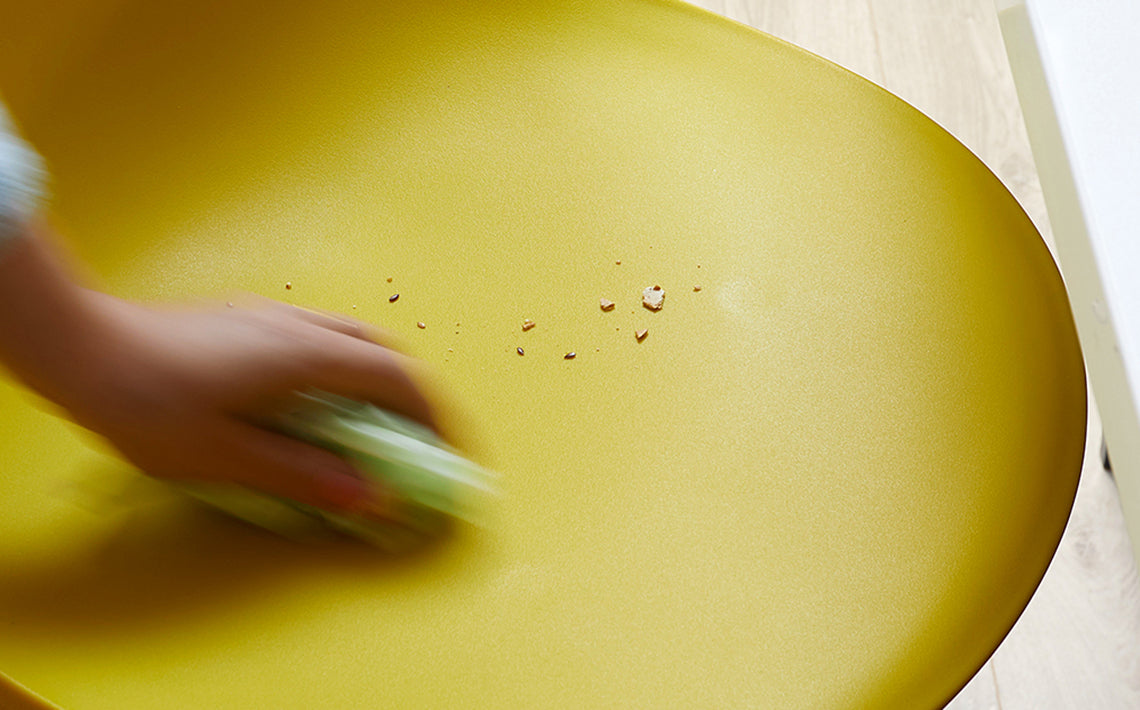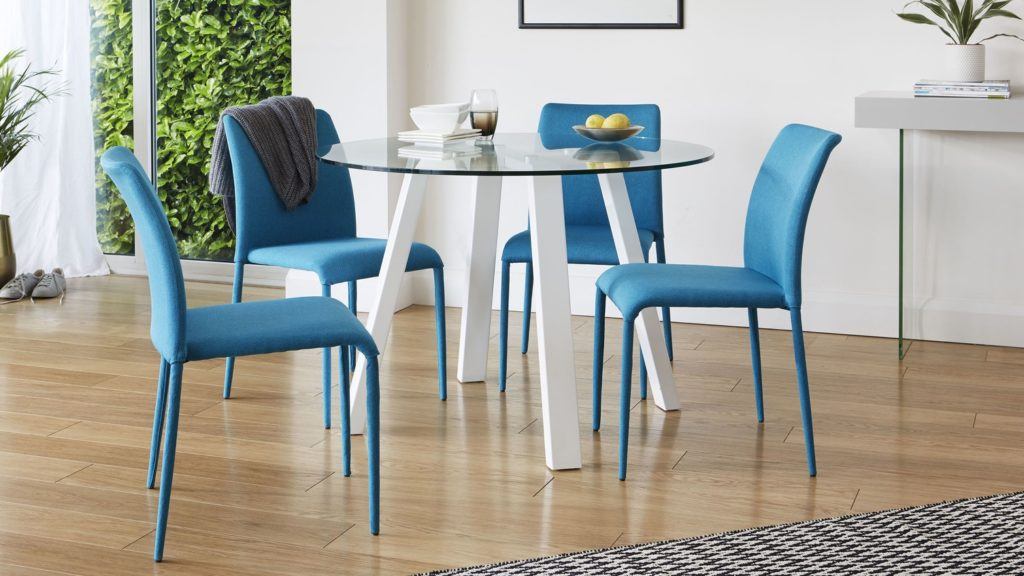Our Top Tips on How to Properly Care for Faux Leather

As we are big fans of faux leather here at Danetti, we thought we would share our top tips with you on how to properly care for it! Not only is it soft, stylish, and extremely durable, but with some useful tricks and tips you can help maintain the materials quality which will keep your furniture looking good for longer. Faux Leather is a big part of our product range, so we have first-hand experience on how best to look after it.
In this post, we’ll talk about the basics of faux leather, so you get a better understanding of how best to care for it. We’ll discuss a whole host of tips on caring for the material and the best means of protection from future wear and tear, so your faux leather dining room chairs or faux leather dining bench stays in top shape.
Firstly, there are 2 main points to remember when dealing with Faux leather:
- It’s a non-porous surface so most stains will sit on the top
- Don’t let it get too dry. If the material is allowed to become over dry then it can crack.
So, What is Faux Leather?
All faux leathers are essentially a layer of synthetic material (a type of plastic) that’s embossed with a leather like grain and is backed with fabric. However, there are a range of different types and qualities – the most common being PVC (poly vinyl chloride), Polyurethane and Polyamide microfibre.
There’s a huge variation on the market but we only use Polyurethanes, which we often refer to as PU. We prefer Polyurethanes as they are easier to care for and better for the environment than PVC. The reason this is relevant when looking after material is that although PU is more breathable than PVC, it is still classed as non-porous so marks will generally sit on the surface. That said, it is breathable so heat and moisture means that a stain can penetrate the material if the conditions are right (or wrong!) for you.

Top Tip: Protection is key…
Although leather and PU can look the same, they are very different! Having said that, some of the principles of caring for leather can be applied to faux leather. A protective treatment is a great precaution but with a different effect: unlike with real leather, a protective treatment won’t penetrate and moisturise the faux leather, but rather will add a thin protective layer so that the surface is easier to clean. If marks are easier to clean to start with, there is less need for the harsher cleaners which will lead to drying – a big no no with faux leather.
Top Tip: Do a regular very mild clean
Regardless of whether you have brown faux leather dining chairs, black faux leather dining chairs, or grey faux leather bar stools, mild is the order of the day when cleaning faux leather! Harsh detergents will cause drying. It’s a good idea to give the surface a regular once over to keep on top of general little marks that just build up with use. We recommend warm water with some washing up liquid and a non-abrasive cloth. Wring the cloth out so that it’s not dripping wet and wipe over. Follow up by drying off with a soft cloth such as a microfiber cloth. This stops general wear and tear and everyday marks from building up and making the surface look grubby.

7 things to keep in mind when maintaining faux leather:
Sunlight
Direct sunlight can dry out faux leathers. If your dining table is in a sunny spot maybe try and rotate the chairs once a month so that the same ones are not fully in the mid-day sun all the time.
Colour transference
Clothes that are indigo dyed (like jeans) or strong colours can transfer onto light colours. Be sure to give this a wipe as soon as you notice it, as it’s the kind of stain that will penetrate if left. A quick wipe down with a baby wipe after use should keep this at bay. It’s the kind of stain that only becomes obvious once it’s been there a while and by then it’s generally too late. The regular once over will also help this.
Test first
Anything you put on your faux leather, try on a hidden part first just to check that there is no adverse reaction. Test it, let it dry and then try on the visible parts.
What product?
When choosing a cleaning product, it’s best to ask yourself ‘would I put it on my skin / body’? If not, chances are it’s too harsh for your faux leather.
Never reach for the bleach
Whatever the stain, don’t use bleach. Bleach is the most drying product you can put on faux leather and it will affect the structure of the fabric and it will become more susceptible to future marking. A small mark is probably easier to deal with and less noticeable than a bit patch that has been affected by bleach treatment. Even if it does remove the stain, that area is then more prone to cracking, plus the surface could be compromised such that future marks actually sink in more.
Soft nonabrasive cloths
Never be tempted to rub / scrub the surface or use any kind of abrasive cloth or sponge. Soft cloths and repeated circular motions are all you need. Scrubbing will crack the faux leather, not remove the mark.
Clean after cleaning
Whatever you use to clean a mark, whether it works or not, always give it a wipe afterward with mild detergent. The cleaners will do the job but they are not meant to be left on the surface for long periods of time.
So, to recap on what we’ve pinpointed:
- Treat faux leather like your skin – avoid letting it get too dry and don’t use anything too harsh like bleach.
- Protecting the surface makes it easier and more effective to clean. Stains will sit on the top so protecting the surface will make cleaning an easier, less abrasive process. Approach larger stains in parts. Patch clean one bit and then when you have a successful result, repeat on the other areas.
There you have it, Danetti’s own run down of the best ways to care for and to protect faux leather. Reckon we’ve missed anything? or do you have your own remedy for cleaning that you’re willing to share with the world! We’d love to hear some of your own hints and tips, including your opinions and experiences with faux leather furniture. Be sure to post your responses in the comments
1 comment
-
Thank you for this information it was very helpful
Marsha Caudill on
Don't miss a thing
Simply enter your email address below and stay up to date with our latest news and products.
Shop the set
Explore Our Blogs
 Furniture Cleaning Tips: The Only Guide You’ll Ever NeedWhether High gloss or Wood Veneer. Real Leather or Velvet, we've got all the cleaning tips for furniture that you'll ever need to know.Read more
Furniture Cleaning Tips: The Only Guide You’ll Ever NeedWhether High gloss or Wood Veneer. Real Leather or Velvet, we've got all the cleaning tips for furniture that you'll ever need to know.Read more How to clean a fabric sofa – Our insider secrets for keeping your sofa newer for longerRanging from little spot cleaning to a full deep clean, check out our handy tips and advice on how to keep you sofa looking brand new for years to come!Read more
How to clean a fabric sofa – Our insider secrets for keeping your sofa newer for longerRanging from little spot cleaning to a full deep clean, check out our handy tips and advice on how to keep you sofa looking brand new for years to come!Read more Dining Table Guide: How to Choose the Perfect Dining Table for Your HomeIf you're looking for help on how to choose the right dining table, you've come to the right place! This guide is packed full of dining table style and sizing tips that will help you choose the perfect table for your home, bringing everyone back together for mealtimes.Read more
Dining Table Guide: How to Choose the Perfect Dining Table for Your HomeIf you're looking for help on how to choose the right dining table, you've come to the right place! This guide is packed full of dining table style and sizing tips that will help you choose the perfect table for your home, bringing everyone back together for mealtimes.Read more First-Time Buyers: Furniture GuideAccording to the news, the UK housing market has been booming in recent months, due to the increase in first-time buyers entering the property market - up 30% on the 2012 figure. First-time buyers have been able to access lending and lending has hit is highest quarterly total since 2007.Read more
First-Time Buyers: Furniture GuideAccording to the news, the UK housing market has been booming in recent months, due to the increase in first-time buyers entering the property market - up 30% on the 2012 figure. First-time buyers have been able to access lending and lending has hit is highest quarterly total since 2007.Read more A guide to styling your small gardenIn modern life, many of us now have smaller gardens, but that doesn't mean you can't style it how you would like without making it practical. If you have a small garden but are unsure on how to style it, see our tips and recommendations from our stylist Katie for an aesthetic, yet practical oasis.Read more
A guide to styling your small gardenIn modern life, many of us now have smaller gardens, but that doesn't mean you can't style it how you would like without making it practical. If you have a small garden but are unsure on how to style it, see our tips and recommendations from our stylist Katie for an aesthetic, yet practical oasis.Read more







